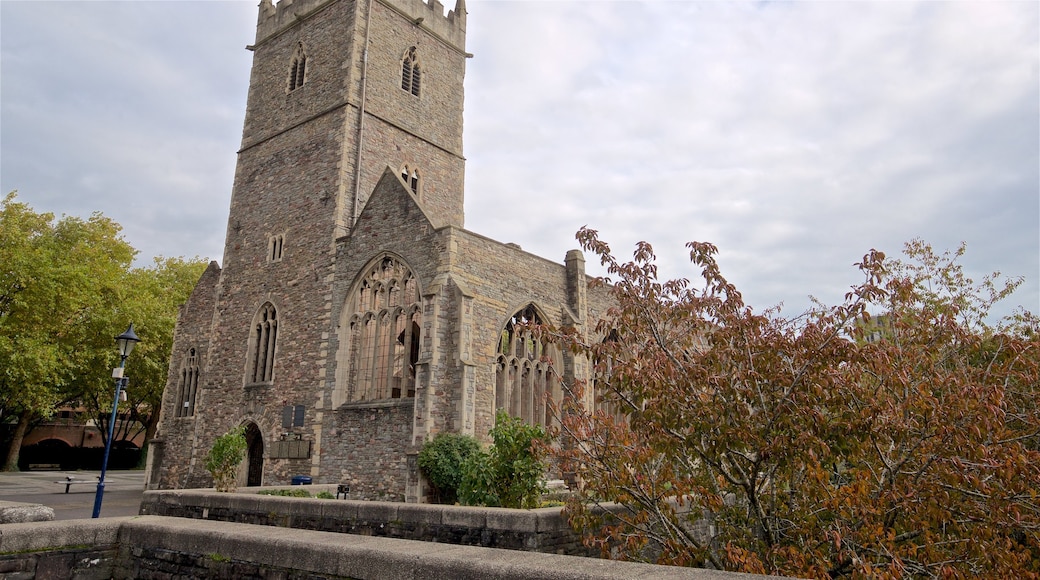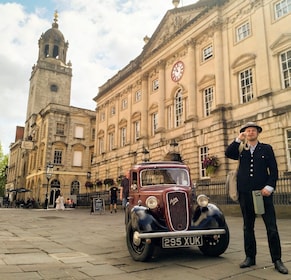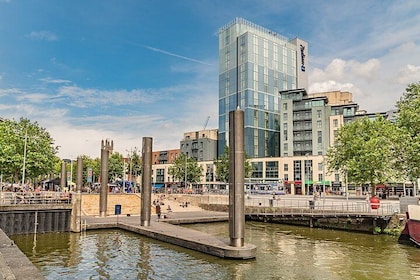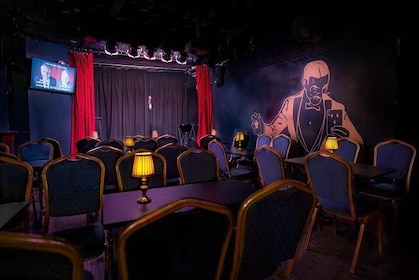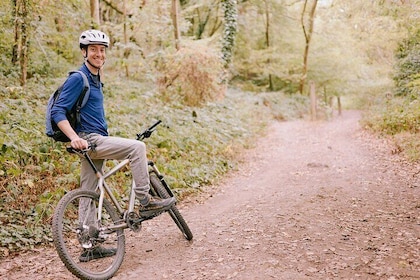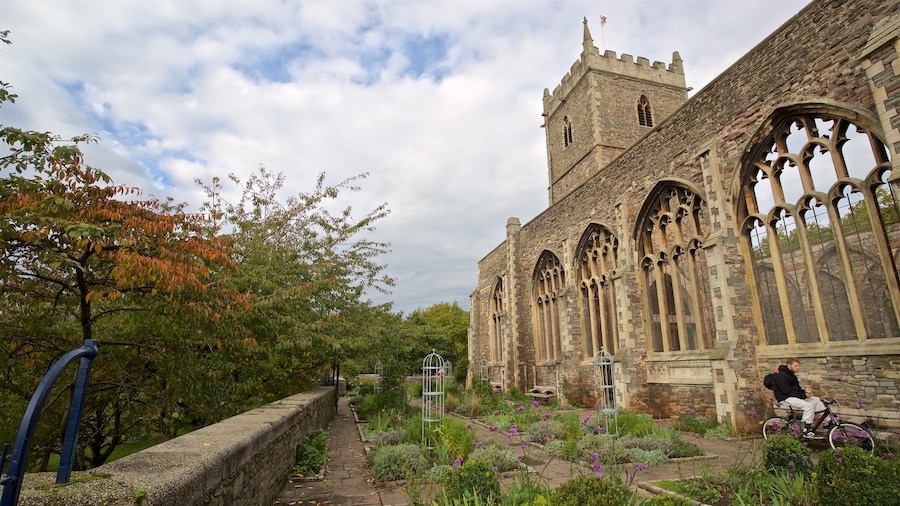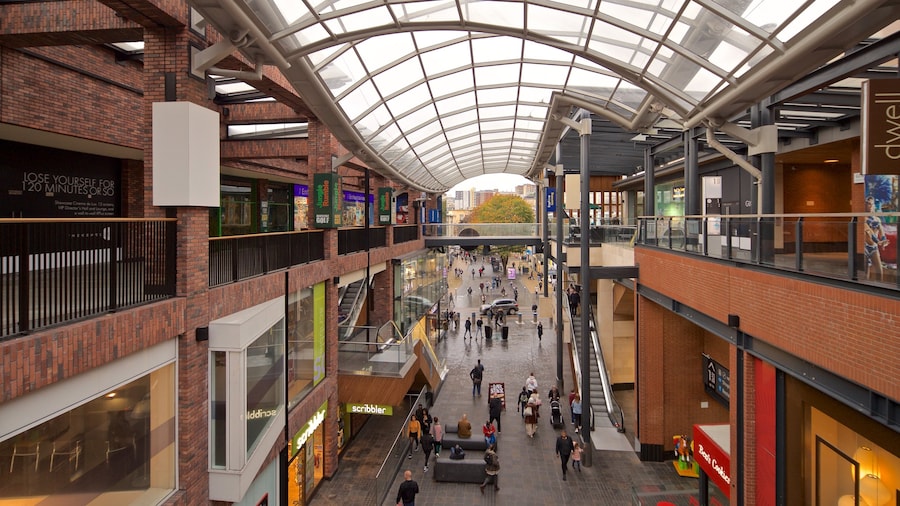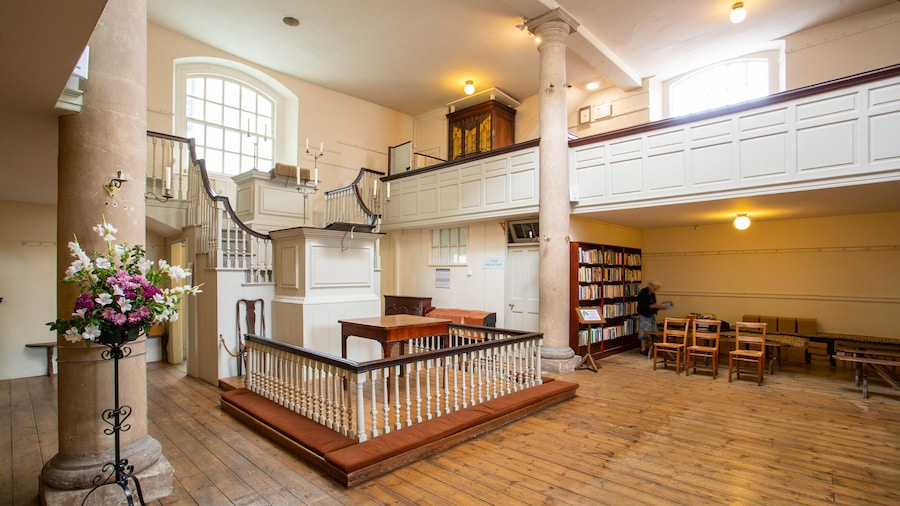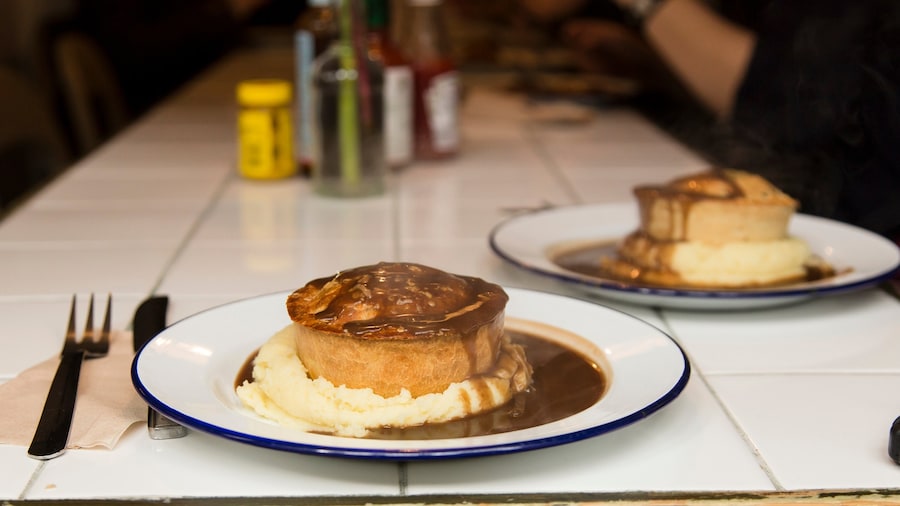Ancient castle ruins, memorial gardens and public art pieces decorate the lush lawns of this city centre park.
Castle Park is a popular urban space and recreational area shrouded in hundreds of years of city history. This was once the geographical center of Bristol and a busy commercial district home to a castle, merchant houses, shops and taverns. Archaeological discoveries show evidence of a settlement that dates back to the Anglo-Saxon times. Bomb raids destroyed much of the area in the 1940 Bristol Blitz. It reopened as Castle Park in 1978.
Relics of Bristol Castle, built in the Norman period and destroyed in 1650, lie scattered around the park. See the castle keep, a sally port, vaults and walls. The roofless shell and tower of the 12th-century St. Peter’s Church is now a memorial to the people that lost their lives during the World War II bombings. St-Mary-le-Port is another ruined church founded by the Saxons and located on the site of a busy pre-war shopping street.
Castle Park Tree Trail is a 0.6-mile (1-kilometer) long trail that visits a selection of the park’s 320 trees. Particularly notable are the silver birch trees in the Normandy Garden of Peace, which honors the D-Day Landings. Spot colorful herbs and flowers in the Castle Park Physic Garden, next to St. Peter’s Church. Download the trail via the official website of Bristol City Council or pick up a copy at the Canon’s Road visitor center.
Look for artwork, including a drinking fountain adorned with castle- and nautical-themed carvings. Beside the Still Waters, by British artist Peter Randall-Page, is a geometric stone sculpture that resembles an inverted acorn. Grab lunch at the park’s café or simply sit on the lawns and enjoy the peaceful surroundings.
Castle Park is bordered by Bristol Old City, Bristol Shopping Quarter and the New Cut waterway. Castle Bridge provides pedestrian access between the park and the Redcliffe neighborhood. Passenger ferries travel between Castle Park Landing and Bristol Harbourside. Those arriving by car can use the metered car parks at Bristol Shopping Quarter.


